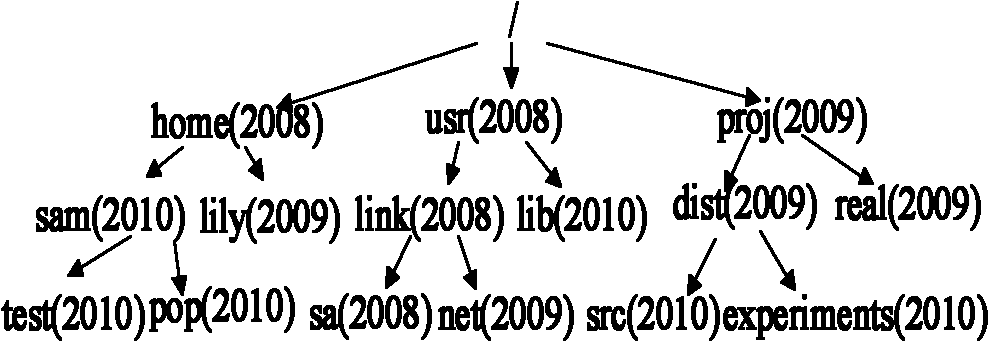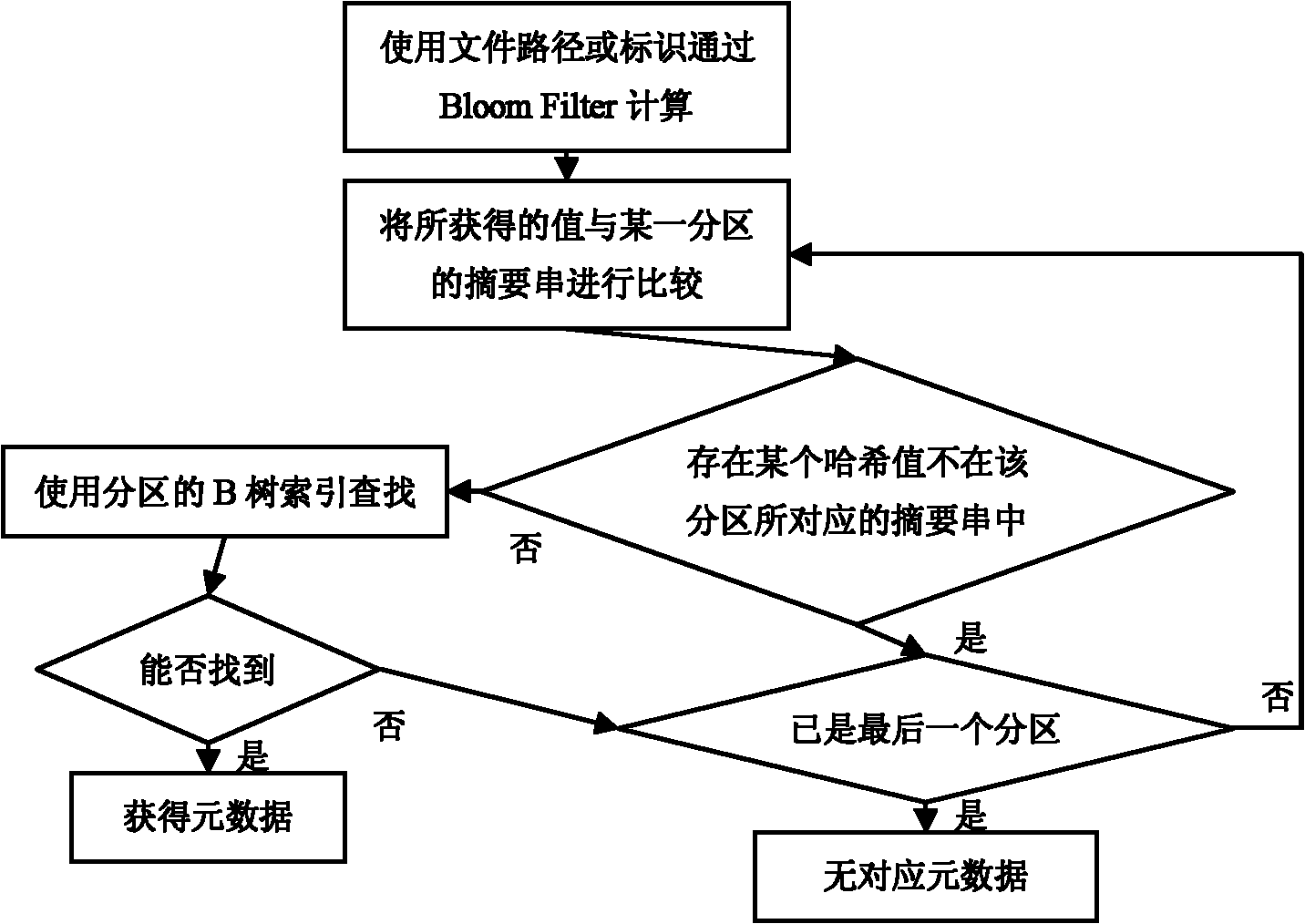Metadata server of mass storage system and metadata indexing method
A metadata server and mass storage technology, applied in the storage field, can solve problems such as poor flexibility, high time and space overhead, etc., and achieve the effect of small time and space overhead and reduced time and space overhead
- Summary
- Abstract
- Description
- Claims
- Application Information
AI Technical Summary
Problems solved by technology
Method used
Image
Examples
Embodiment 1
[0078] A metadata server for a mass storage system, comprising a device for receiving a metadata access request, a device for grading metadata, a device for grading metadata for metadata, a device for searching metadata, and a device for returning metadata; There is also a metadata grading device and a metadata indexing device between the devices, which are used to classify the metadata according to the activity, and use corresponding methods to establish indexes of different levels of metadata.
[0079] In this embodiment, on the basis of the metadata server of the existing mass storage system, a metadata grading device and a metadata grading indexing device are added to form a new metadata server with relatively small time and space overhead.
[0080] The metadata grading device includes main functions such as a metadata activity calculation module and a metadata grading module.
[0081] The description of each function in the metadata grading device is shown in Table 1.
...
Embodiment 2
[0089] The classification-based metadata organization method includes the following steps: 1. Calculate the activity of metadata; 2. Divide metadata into two parts: active and inactive; 3. Establish an index of active metadata; 4. Establish an index of inactive metadata The index of the data.
[0090] The step of calculating the activity of metadata may specifically include the following steps:
[0091] (1) Calculate the activity of metadata: use formula 1 to calculate.
[0092] The step of dividing metadata into active and inactive parts may specifically include the following steps:
[0093] (1) Define the metadata active threshold , as the basis for grading metadata;
[0094] (2) Use Formula 2 to judge the level of metadata.
[0095] The step of establishing an active metadata index may specifically include the following steps:
[0096] (1) Active metadata partition: partition active metadata according to file attributes (such as suffix name);
[0097] (2) Adjust meta...
Embodiment 3
[0108] The method for searching hierarchical metadata includes the following steps: 1. Receive an access request for metadata; 2. Search for metadata; 3. Return metadata.
[0109] The step of finding metadata may specifically include the following steps:
[0110] (1) Search in active metadata: first search with the index of active metadata, if found, go to step 3, otherwise go to step (2);
[0111] (2) Search in inactive metadata: search with the help of the index of inactive metadata, if found, go to step 3, otherwise return the information that the metadata cannot be found.
[0112] like image 3 As shown in , the search step in the active metadata specifically includes the following steps:
[0113] (1.1) Use the file path or logo to calculate through Bloom Filter;
[0114] (1.2) Compare the obtained value with the summary string of a certain partition;
[0115] (1.3) If there is a hash value that is not in the summary string corresponding to the partition, go to step (4...
PUM
 Login to View More
Login to View More Abstract
Description
Claims
Application Information
 Login to View More
Login to View More - R&D
- Intellectual Property
- Life Sciences
- Materials
- Tech Scout
- Unparalleled Data Quality
- Higher Quality Content
- 60% Fewer Hallucinations
Browse by: Latest US Patents, China's latest patents, Technical Efficacy Thesaurus, Application Domain, Technology Topic, Popular Technical Reports.
© 2025 PatSnap. All rights reserved.Legal|Privacy policy|Modern Slavery Act Transparency Statement|Sitemap|About US| Contact US: help@patsnap.com



